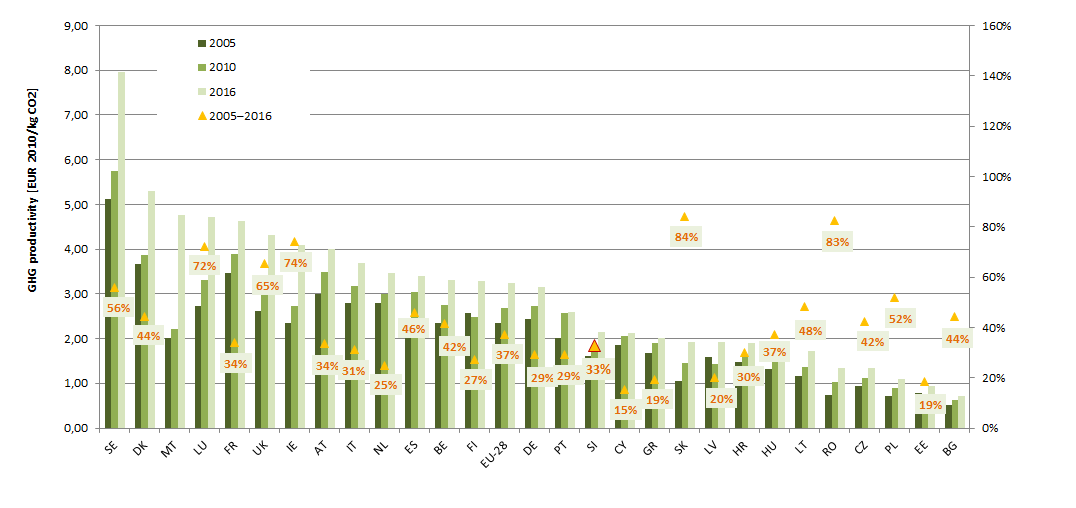The emission productivity in Slovenia increased in 2017, but progress in comparison with other EU countries is too slow. Despite progress, the link between economic development and measures to reduce GHG emissions needs to be strengthened. The Strategy for the Development of Slovenia 2030 sets the goal of improving the emission productivity in 2030, the EU average. Slovenia's development strategy monitors emission productivity slightly differently, where the indicator takes into account GDP based on purchasing power standards. According to the comparison with the EU, Slovenia is still lagging behind the EU in 2016. In 2017, Slovenia managed to improve its emission productivity. The goal set for the indicator in the Development Strategy of Slovenia is not defined in value, but pursues the goal of achieving the EU average.














